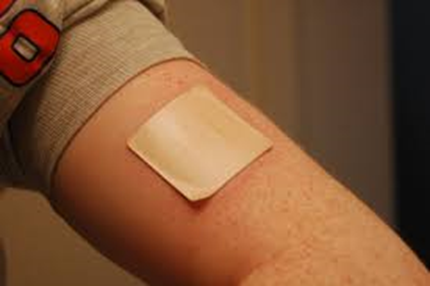A nurse is assessing a client who is receiving intravenous therapy. The nurse should identify which of the following findings as a manifestation of fluid volume excess?
Bilateral muscle weakness
Thready pulse
Decreased bowel sounds
Distended neck veins
The Correct Answer is D
Choice A Reason:
Bilateral muscle weakness is not typically associated specifically with fluid volume excess. Muscle weakness can result from various causes, such as electrolyte imbalances or certain medical conditions, but it's not a primary manifestation of fluid volume excess.
Choice B Reason:
Thready pulse is not correct. A thready pulse refers to a weak and barely palpable pulse. This is more commonly associated with conditions like shock or reduced cardiac output rather than fluid volume excess.
Choice C Reason:
Decreased bowel sounds is not correct. Reduced or absent bowel sounds may indicate gastrointestinal issues, but they are not a direct manifestation of fluid volume excess. Increased bowel sounds might be more associated with certain types of gastrointestinal disturbances or fluid imbalances, but decreased sounds are not a typical sign of fluid volume excess.
Choice D Reason:
Distended neck veins is correct. In a client experiencing fluid volume excess, distended neck veins can often be observed due to increased venous pressure. This occurs as a result of the body retaining more fluid than it can handle, leading to an increase in blood volume and pressure within the vascular system. This can cause the jugular veins in the neck to appear distended or prominent.

Nursing Test Bank
Naxlex Comprehensive Predictor Exams
Related Questions
Correct Answer is A
Explanation
Choice A Reason:
Rotate the application site every week is correct. Rotating the application site is essential to prevent skin irritation or sensitization. Advising the client to apply the patch to a different area of clean, dry, non-hairy skin each time helps reduce the risk of skin irritation at the application site.
Choice B Reason:
The transdermal patch can cause insomnia is incorrect. Insomnia is a potential side effect of nicotine replacement therapy (NRT) patches, including transdermal nicotine patches, but it's not a universal side effect for everyone using the patch.
Choice C Reason:
Leave the patch in place for 8 hr. each day is incorrect. Transdermal nicotine patches are typically worn for 16–24 hours each day, depending on the specific product instructions. Leaving the patch on for a shorter duration might reduce its effectiveness in supporting smoking cessation.
Choice D Reason:
The transdermal patch releases nicotine rapidly into the bloodstream is incorrect. Transdermal nicotine patches deliver nicotine slowly through the skin into the bloodstream over an extended period rather than providing a rapid release. This gradual release helps reduce cravings and withdrawal symptoms associated with smoking cessation.

Correct Answer is C
Explanation
Choice A Reason:
Ondansetron is incorrect. Ondansetron is an anti-nausea medication commonly used in cancer patients to manage nausea and vomiting, often caused by chemotherapy. It's not typically contraindicated or known to interact significantly with morphine administered via a PCA pump. This combination is often used to manage both pain and associated symptoms in cancer patients.
Choice B Reason:
Acetaminophen is incorrect. Acetaminophen is a pain reliever and fever reducer that doesn't typically interact significantly with morphine administered via a PCA pump. It's often used concurrently with other pain medications to manage discomfort in cancer patients. There isn't a known significant interaction between acetaminophen and morphine when used appropriately.
Choice C Reason:
Nalbuphine is correct. Nalbuphine is an opioid analgesic, similar to morphine, and administering it concurrently with morphine could potentially lead to opioid overdose or increased risk of opioid-related side effects such as respiratory depression. Thus, it's crucial to clarify with the provider whether there might be a potential interaction or if both medications are indeed necessary in this specific clinical scenario.
Choice D Reason:
Insulin glargine is incorrect. Insulin glargine is a long-acting insulin used to manage blood sugar levels in individuals with diabetes. While its interaction with morphine isn't typically a concern, it's essential to monitor blood sugar levels closely in individuals receiving opioids like morphine, as opioids can affect glucose metabolism and may necessitate adjustments in insulin dosage.
Whether you are a student looking to ace your exams or a practicing nurse seeking to enhance your expertise , our nursing education contents will empower you with the confidence and competence to make a difference in the lives of patients and become a respected leader in the healthcare field.
Visit Naxlex, invest in your future and unlock endless possibilities with our unparalleled nursing education contents today
Report Wrong Answer on the Current Question
Do you disagree with the answer? If yes, what is your expected answer? Explain.
Kindly be descriptive with the issue you are facing.
